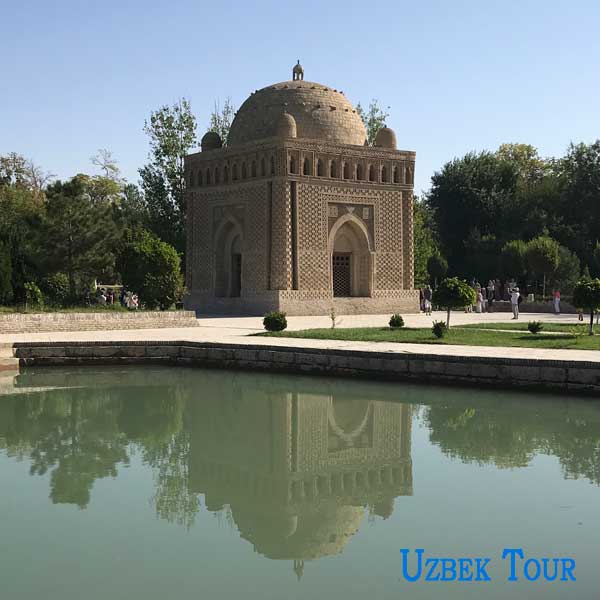Ismail Samani Mausoleum – Samanid Mausoleum
The Ismail Samani Mausoleum is the oldest building in Bukhara, built in the 10th century C.E., is located in the northwestern part of Bukhara, Uzbekistan, just outside its historic center. It was built as the resting place of the powerful and influential Islamic Samanid dynasty that ruled the Samanid Empire (end of the 9th-10th centuries). The mausoleum is believed to have served as the family tomb of the Samanid dynasty, the descendants of a noble Persian family who governed Transoxiana on behalf of the Abbasid Caliphate, based in Baghdad.
At the end of the 9th century, Bukhara became the capital of a Samanid state. Starting from this period, a special attention was paid to the construction of buildings of cult – mosques, madrassas and mausoleums. Under the Samanids, Bukhara significantly increased in size. Over two centuries, new artisans quarters and many caravanserais were built, and the central part of the city became a large bazaar. Bukhara was surrounded by new fortress walls. In the northern part, a new royal palace was erected.
One of the first madrasahs (Farjek) and a minaret in Central Asia was erected in Bukhara, and a huge library of manuscripts was established at the Samanid palace, in which at the end of the 10th century worked Ibn Sina (Avicenna). In architecture the fired bricks on clay, and then on ganch mortar started playing an increasingly important role. The increasing production of fired bricks lead to the progress of various techniques of brick masonry. The facades were decorated with a brick pattern.
Architecture of Samanid Mausoleum
The architecture of the Samanid mausoleum had a “sign system” understandable to all visitors of its time, associated with their worldview, philosophy and image of the memorial building. The harmony and unity of the compositions of this monument impress even modern architecture lovers.
The building’s shape is cuboid, like the Kaaba structure of the Great Mosque of Mecca, while heavy fortress-like corner buttresses are derived from Sogdian traditions of Central Asia. The synthetic style of the tomb is reflective of the 9th and 10th centuries – a time when the region still had large populations of Zoroastrians in their early stages of conversion to Islam.
The horizontal strip of the basement sets out the base, and the light arched gallery above – the completion of the facade; powerful three-quarter columns fix the corners, each entrance is highlighted by a lancet niche. The signs laid out by round discs are clearly visible, coming from the cult of the Sun and planets, but turned into an element of ornament. All this looks natural and harmonious in the mausoleum of the Samanids.
In the Soviet period, arched openings on 3 sides were closed with wooden bars. And in the 4th opening, an entrance door was set right under a wooden beam (42 * 9 cm) containing the name of Ismail’s grandson, Emir Nasr (died in 943).
Significance of Samani Mausoleum
The building is regarded as one of the oldest monuments in the Bukhara region. Samanid Mausoleum appears in virtually every survey on the Islamic architecture and is significant as an example of early Islamic architecture in the Central Asia and worldwide. Its unknown creators harmoniously combined references to the prior regional traditions and deployed innovative structural elements, such as squinches, as well as new for the time features that are considered customary for the Islamic architecture worldwide.













